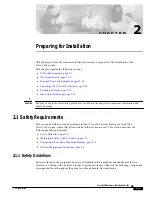
O
optimized mode. The state of a device when it is
sending or receiving data to or from the host in a
compressed format. The number of bits required to
transmit the same amount of data is reduced compared
to the standard 5250 data stream.
P
passive station. (1) On a multipoint connection or a
point-to-point connection using basic mode link control,
any tributary station waiting to be polled or selected. (I)
(2) A station that, at a given instant, cannot send
messages to or receive messages from the control
station. (3) A station in listening mode.
passive UTP hubs. Hubs that do not include powered
circuitry that strengthens and enhances 5250
communication signals. Models 1PA and 2PA are
examples of passive UTP hubs.
phase. Characteristic of a signal. In the case of
twinax signals, one wire is considered phase A and the
other phase B.
pin. One of the conducting contacts of an electrical
connector.
polarity. In the case of the 7299, phase A has one
characteristic and phase B has the opposite
characteristic.
protocol. A series of rules for transferring data.
protocol transparency. In the case of the 7299,
refers to the hubs’ ability to pass reversed polarity
(phase) signals.
punch blocks. Connecting points for UTP cabling.
R
redundant power supply. A spare power supply that
shares the load with the other power supply in the
powered chassis. If one power supply fails, the other
power supply can carry the whole load.
relative humidity. The amount of water vapor in the
air.
remote workstation. A workstation that is attached
directly or indirectly to the host system via some
communication channel.
ring network. (1) A network in which every node has
exactly two branches connected to it and in which there
are exactly two paths between any two nodes.
Synonymous with loop. (T) (2) A network configuration
in which devices are connected by unidirectional
transmission links to form a closed path. See
Figure G-1.
Figure G-1. Ring Network
S
splices. The joining of one or more wires at a
common point.
split pair. A cable that uses two conductors that are
from different twisted pairs. See
twisted pair.
star network. (1) A radial, or star-like, configuration of
nodes connected to a central controller or computer in
which each node exchanges data directly with the
central node. (2) Synonymous with centralized
network.
Note: Examples are the network topologies used in
computerized branch exchanges (CBXs) and in private
branch exchanges (PBXs). See Figure G-2.
Figure G-2. Star Network
stub cable. Synonym for drop cable. (T)
synchronization. The action of forcing certain points
in the execution sequences of two or more
asynchronous procedures to coincide in time. (T)
System/36. A general purpose data processing system
for interactive and batch processing. The system has
several models that vary in the size of main storage and
Glossary
G-3
Summary of Contents for 1PA
Page 2: ......
Page 8: ...vi Planning Installation and Maintenance Guide...
Page 14: ...Planning Installation and Maintenance Guide...
Page 29: ...This page intentionally left blank Chapter 2 Planning Your Installation 2 3...
Page 30: ...Figure 2 1 7299 Multiplexer Address Worksheet 2 4 Planning Installation and Maintenance Guide...
Page 31: ...Figure 2 2 7299 Multiplexer Address Worksheet Example Chapter 2 Planning Your Installation 2 5...
Page 46: ...2 20 Planning Installation and Maintenance Guide...
Page 72: ...Planning Installation and Maintenance Guide...
Page 78: ...5 6 Planning Installation and Maintenance Guide...
Page 86: ...6 8 Planning Installation and Maintenance Guide...
Page 92: ...Planning Installation and Maintenance Guide...
Page 100: ...B 6 Planning Installation and Maintenance Guide...
Page 107: ......






































